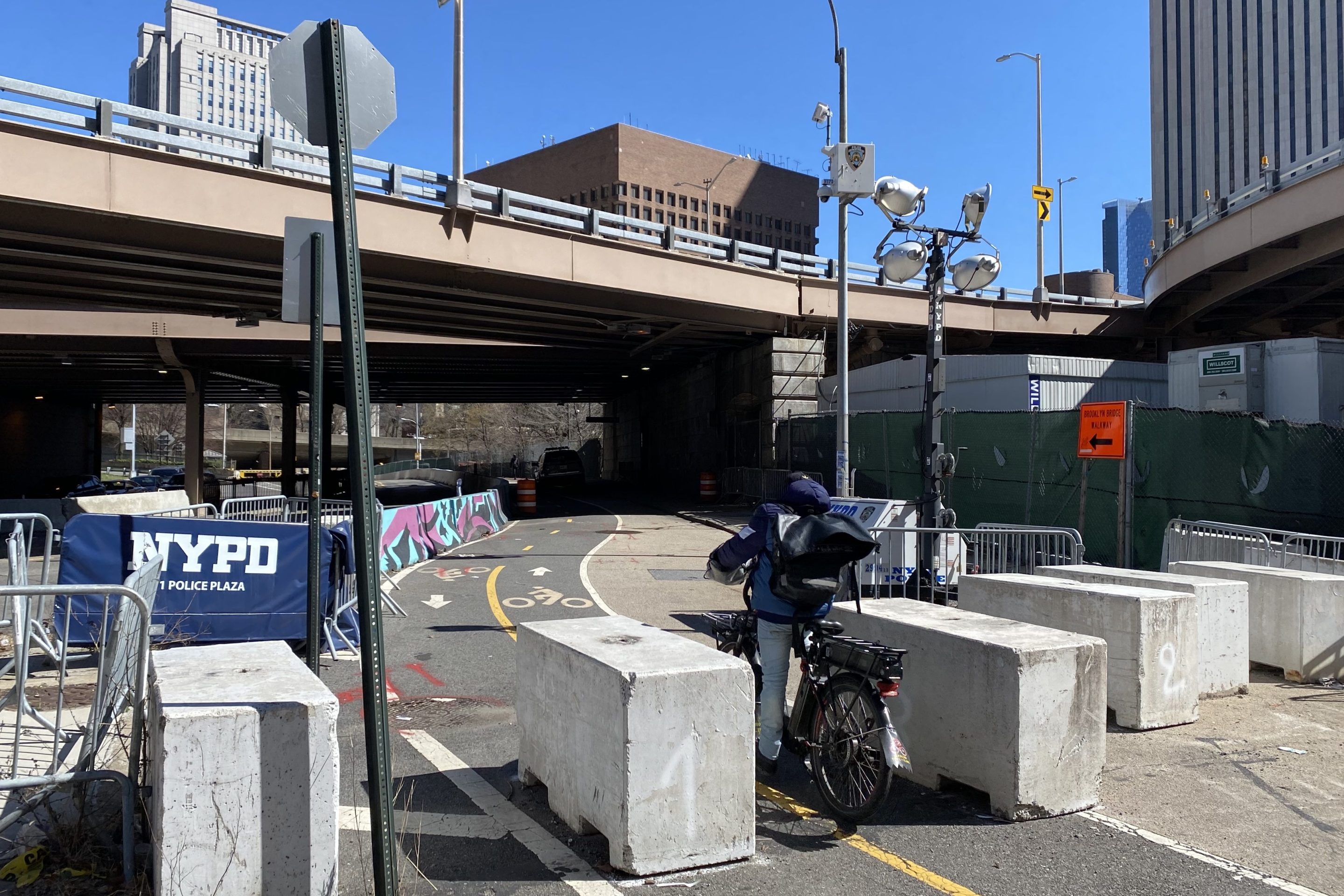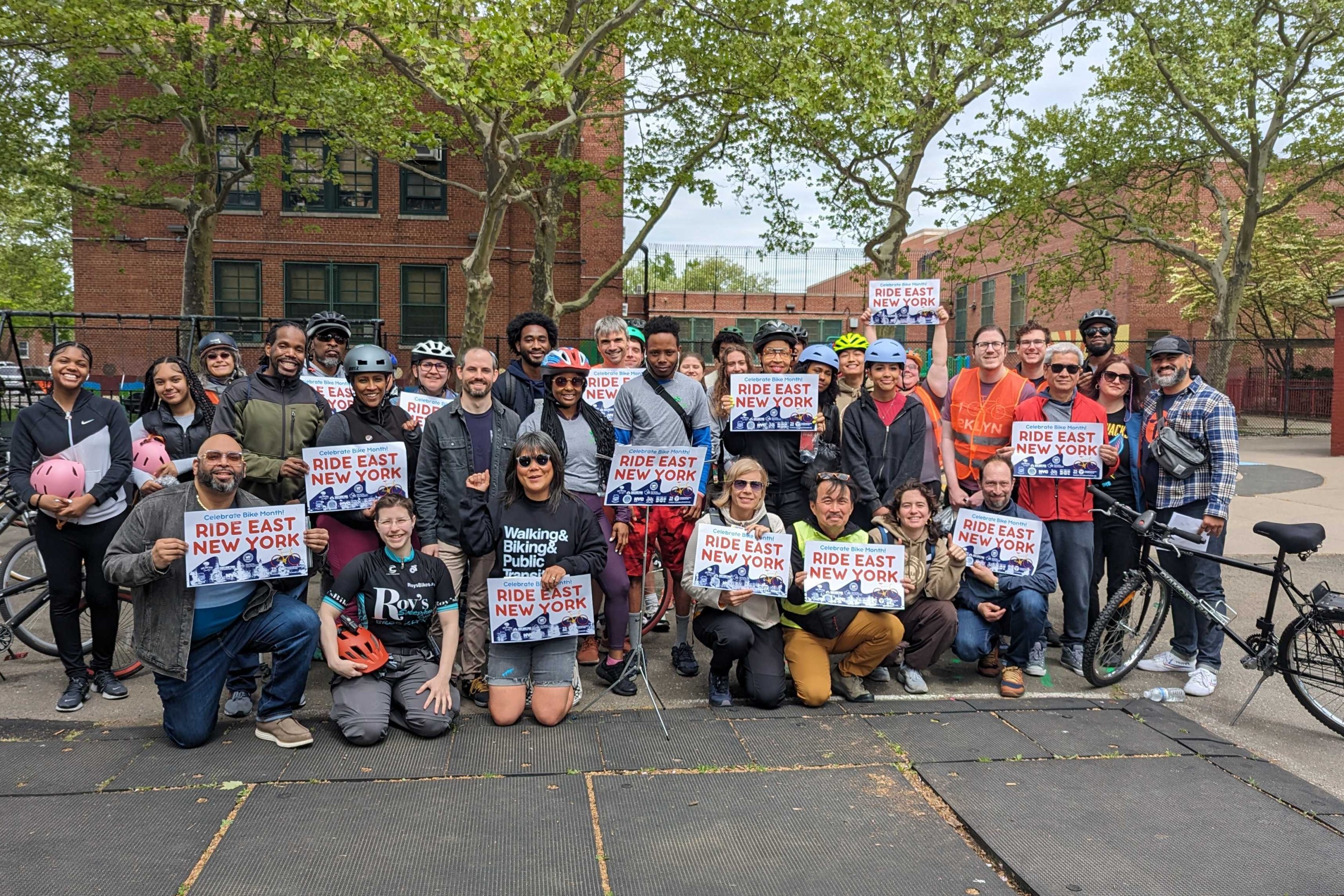LOADING ZONES: DOT is Finally Taking Back Some Streets From Car Storage!
10:29 AM EDT on July 25, 2019
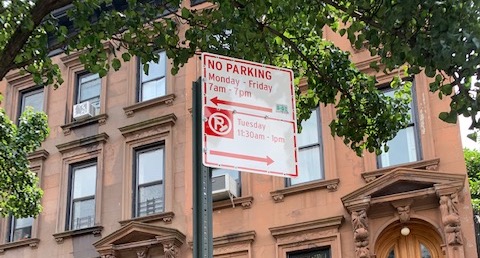
A street sign in Brooklyn declares no parking to accommodate a loading zone. This sign was removed on account of push-back by car owners. Photo: Kings County Politics
It's one small step for a block, one giant leap for street safety.
The city has begun an unheralded — but monumental — pilot program to reduce the scourge and danger of double-parked delivery trucks by eliminating car storage along a dozen residential strips in all five boroughs, a move that finally addresses the explosion in FedEx and UPS deliveries over the past two decades and the rise of app-based car services in the outer boroughs.
The pilot program also has one side benefit: It may — may — start breaking the culture of city policies geared towards the car-owning minority.
“The loading zones will work to provide curb space during daytime and evening hours to allow for the pick-up and drop-off of passengers as well as loading and unloading of goods – helping to more efficiently utilize curb space and reduce the number of double parked cars,” said DOT spokeswoman Alana Morales.
DOT kicked off its new so-called Residential Loading Zone Evaluation earlier this month by forbidding private cars from parking along some blocks Monday through Friday from 7 a.m. to 7 p.m. DOT said it selected 12 locations for the pilot, focusing on narrow one or two-way streets with bike infrastructure and/or a bus route.
The agency didn't release details to the media, but Kings County Politics broke the story after some residents of Fort Greene complained that they had gotten tickets for parking in one of the new zones: Greene Avenue from Cumberland Street to Classon Avenue last week. The website's story focused on car owners who were upset by the new plan rather than its sheer audacity and potential to fix other residents' longstanding problem.
The daily onslaught of deliveries from companies like FedEx, UPS, Fresh Direct, and Amazon, plus hundreds of thousands of more cab trips that simply were not happening five years ago, has served as an impediment to Mayor de Blasio's signature Vision Zero initiative — it creates more traffic on local streets and increases the hazards for pedestrians and cyclists. There are whole Twitter accounts dedicated to documenting UPS and FedEx trucks in bike lanes.
Blocking a roadway can have deadly consequences — Madison Lyden was forced out of the Central Park West bike lane because of a parked livery car, and into the path of a private sanitation worker who hit and killed her last summer.
And it's often so bad that last October, Manhattan’s Community Board 7 even asked DOT to repurpose some parking spots to create delivery zones along Central Park West and West End Avenue. That board has even flirted with further, ground-breaking no-parking requests, such as demanding the mayor stop simply giving away free on-street parking.
But DOT declined to do much about it, even as its hard-fought painted bike lanes were constantly being parked on. Meanwhile, the Department of Finance's Stipulated Fine Program reduces fines for violations such as parking in a bike or bus lane — a program that ends up encouraging illegal parking and also costing the city tens of millions of dollars in fines handed out to delivery companies, Streetsblog previously reported.
https://twitter.com/FedExInBikeLane/status/1064571702821171201?ref_src=twsrc%5Etfw%7Ctwcamp%5Etweetembed%7Ctwterm%5E1064571702821171201&ref_url=https%3A%2F%2Fnyc.streetsblog.org%2F2018%2F11%2F27%2Fcity-ignores-west-side-request-for-loading-zones-putting-parking-over-safety%2F
Tickets will still likely be reduced in price, but now truckers will be less likely to double-park or block roadways and bike lanes, thanks to the new "no parking" zones in the 12 residential communities. Leaders along one of those strips, West End Avenue from 79th to 95th streets, have been championing more loading zones for at least a year — and consider the new plan a major win.
“It’ll be great. Loading zones increase safety, ease traffic congestion, and make streets more manageable," said Community Board 7 Transportation Committee co-chairman Howard Yaruss. "We want loading zones all over but we definitely want them there."
Some safe-street advocates like Yaruss and others may cheer the new loading zones, but others who still enjoy and benefit from the city’s yet-to-be-broken car culture will hue and cry over the loss of a few parking spots just like they have before.
Not all leaders are like Yaruss. Local pols and business leaders in Forest Hills opposed a similar city plan to expand loading zones on Austin Street in order to ease congestion because they claimed it would make finding a parking spot harder. As a result, the roadway remains a congested, clogged mess that is bad for business and dangerous to pedestrians and cyclists. There have been 50 crashes just this year on Austin Street, causing injuries to five pedestrians.
And another controversial DOT initiative called "clear curbs" to help speed up buses along busy Fulton Street in Fort Greene and Clinton Hill by replacing some curbside parking spots with a bus lane during peak hours was met with backlash from locals, plus Fort Greene Council Member Laurie Cumbo — who even called for it to be shut down during the afternoon.
Cumbo said in 2017 that car parking was more important than the safety or ensuring bus riders get to where they’re going as fast as possible: “The challenge with the Department of Transportation’s proposal to implement a ‘buses only’ lane along Fulton Street between Grand and Lafayette avenues is the removal of much-needed parking for residents and small businesses,” she posted on social media, Streetsblog reported.
And on Roosevelt Avenue in Queens, the city capitulated to a car-loving community after some politicians and local businesses complained without evidence that the loss of parking as part of the same "clear curbs" program was hurting their bottom lines.
But streets are for the public, not for the mere 27 percent of New Yorkers who commute to work via their cars — the majority use public transportation, according to the city's Economic Development Corporation. Specifically in Manhattan, just eight percent of residents drive to work, and car ownership is minuscule. Most private cars are simply stored for days on end in the public right of way, the DOT has found.
DOT says it notified all affected community boards and elected officials in each of the five boroughs before implementation of the loading zone pilot. But some residents unfamiliar with the new program had already gotten their cars booted and were slapped with $185 tickets for parking Greene Avenue, according to Kings County Politics.
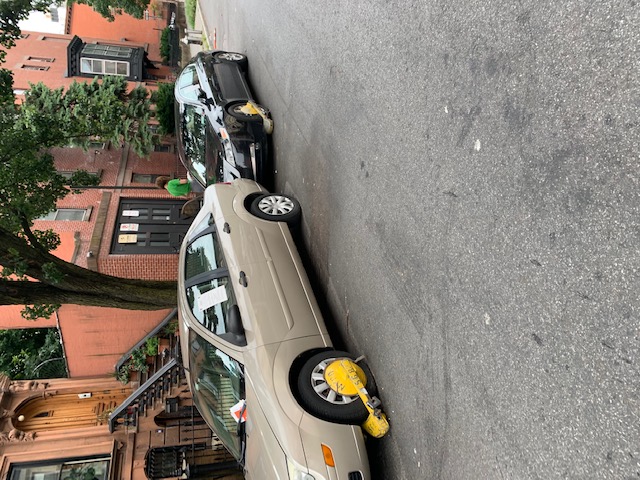
And over on Manhattan Avenue near Ainslie Street on Wednesday afternoon, Streetsblog spotted two cars parked in "no-parking" zones where the pilot had already gone into effect. They both had tickets on their dashboards.
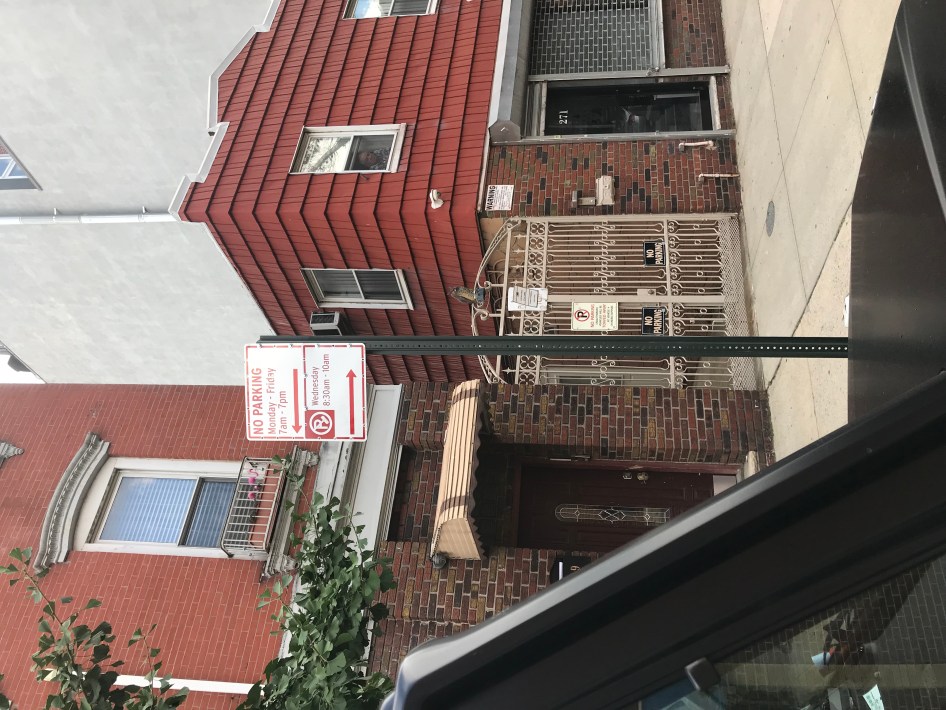
Streetsblog reached out to several transportation experts, but none had heard about the city's pilot program. A search of Streetsblog's outgoing email server discovered that reporters had asked DOT about its plans for residential loading zones roughly once a month since rumors of a plan started circulating in July, 2018. Yet the agency declined to inform Streetsblog in advance of this revolutionary pilot program, perhaps anticipating a backlash by the car-owning minority about the shift in priorities over the public roadway — from car storers to all other users.
DOT says it will evaluate the effectiveness of the loading zones over the next year.
Here's where the pilot program is in effect
Brooklyn
Greene Avenue from Cumberland Street to Classon Avenue in Fort Greene: about 13 blocks
Bergen Street from New York Avenue to Sixth Avenue in Crown Heights/Prospect Heights: about nine blocks
Manhattan Avenue from Ainslie Street to Bayard Street in Williamsburg/Greenpoint: about nine blocks
Manhattan
W. 15th Street from Sixth Avenue to Eighth Avenue in Chelsea: two avenues
W. 16th Street from Ninth Avenue to Sixth Avenue in Chelsea: three avenues
West End Avenue from W. 79th Street to W. 95th Street in the Upper West Side: 16 blocks
The Bronx
Gerard Avenue from E. 153rd Street to E. 167th Street in South Bronx: 14 blocks
Tremont Avenue from Morris Avenue to Sedgwick Avenue in Morris Heights: about 10 blocks
Queens
74th Street from 37th Avenue to 31st Avenue in Jackson Heights: five avenues
108th Street from 52nd Avenue to Roosevelt Avenue in Corona: about 11 blocks
Staten Island
Richmond Terrace from Jersey Street to Westervelt Avenue in St. George
St. Marks Place from Fort Place to Wall Street in St. George
Julianne Cuba joined Streetsblog in February, 2019, after three years covering local news and politics at The Brooklyn Paper. There, she also covered the notoriously reckless private carting industry and hit-and-runs. A 2015 graduate of Stony Brook University’s School of Journalism Master’s Program, she lives in Brooklyn. Julianne is on Twitter at @julcuba. Email Julianne at julianne@streetsblog.org
Read More:
Stay in touch
Sign up for our free newsletter
More from Streetsblog New York City
City Considers Fixes for Another Ridiculously Slow Cross-Bronx Bus
Potential bus improvements are on the table for the Bronx's Tremont Avenue, but the Adams administration's failures on nearby Fordham Road loom large.
DOT Unveils First Step for Park Row Redesign
The city hopes to make Park Row more appealing to residents and visitors. But the real work is years off.
Monday’s Headlines: East New York’s New Bikes Lanes Reduced Crashes Edition
Initial results show East New York's protected bike lanes made Cozine and Wortman avenues safer. Plus more news.
Stockholm Leader’s Message to NYC: ‘Congestion Pricing Just Works’
"In Stockholm, people really thought that congestion pricing would be the end of the world, the city will come to a standstill, no one would be able to get to work anymore and all the theaters and shops would just go bankrupt. None of that happened."
Friday’s Headlines: Trump Trial Trumps Safety Edition
Is anyone going to bother to fix the dangerous mess on the streets and plazas around the Trump trial? Plus more news.

